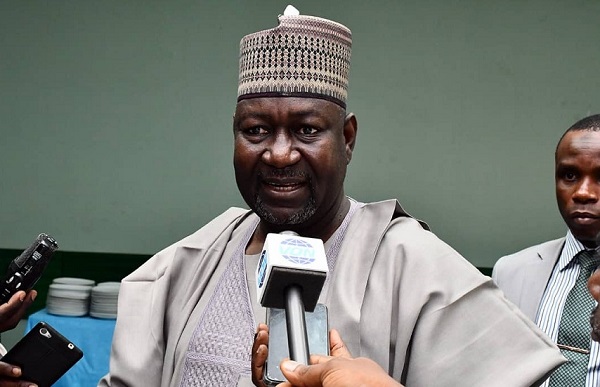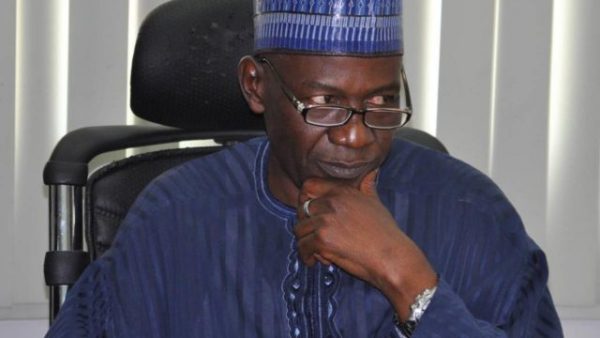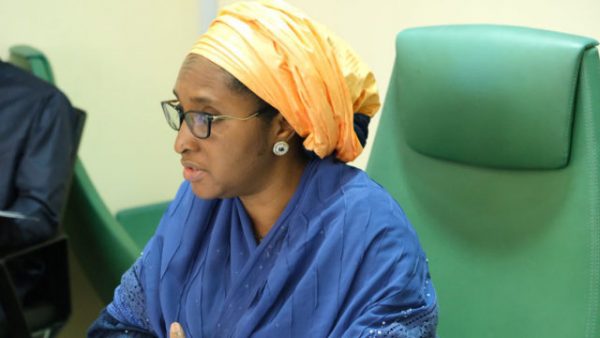Nigeria’s debt now N26.22tn, says DMO
 The Federal Government and the 36 states as well as the Federal Capital Territory owed a total N26.22tn as of September 30, 2019, the Debt Management Office disclosed on Friday.
The Federal Government and the 36 states as well as the Federal Capital Territory owed a total N26.22tn as of September 30, 2019, the Debt Management Office disclosed on Friday.
The amount indicated that the total public debt rose by 2.02 per cent in the 12 months from September 2018, when the Federal Government, the states and the FCT owed a total of N25.7tn.
The Director- General of the DMO, Patience Oniha, said this at a ‘Presentation on Public Debt to Stakeholders’ in Abuja.
She explained that the figures for December 2019 were not ready, adding that the DMO saw the need to make some clarifications concerning the country’s debt profile.
“There has been so much about debt in the public forum and we want to clarify some of the issues,” Oniha said.
Noting that the National Assembly approved all the borrowings made by the Federal Government, the DMO boss suggested that all Nigerians were collectively responsible for the debt since they were represented at the National Assembly.
She said, “Borrowing is not approved by one man. It is not determined by one man.
“Borrowing is not ad hoc – there are laws and laid down provisions for borrowing.”
She added that the public debt stock was cumulative, involving borrowings made by previous administrations.
The devaluation of the exchange rate, brought about by the economic downturn, considerably hiked the country’s debt profile, according to Oniha.
“Exchange rate devaluation increased external debt stock by over N1tn,” she noted.
Oniha explained that the total public debt as of September 2019 included promisory notes amounting to N821.65bn which had been issued to settle the Federal Government’s arrears to oil marketing companies and state governments.
According to her, the issuance of the promisory notes was in line with the promisory programme approved by the Federal Executive Council and the National Assembly.
The DMO boss said out of total new borrowing of N1.61tn provided for in the 2019 Appropriation Act, only the domestic component of N802.82bn was raised due to the late passage of the budget.
The expectation that the implementation of the 2020 budget would begin on January 1 also contributed to the inability to raise the external component.
Oniha added that the ratio of domestic debt to external debt, which stood at 69:31 as of September 2019 was about the same as of June 2019 when it was 68:32.
The Medium-Term Debt Strategy targeted a domestic debt to external debt ratio of 60:40, while the ratio of long-term to short-term debt in the domestic debt was 80:20.
Figures released by Oniha further showed that total debt as a percentage of GDP was 18.47 per cent as of September 2019.
The DMO noted that the percentage was within the limit of 25 per cent, and fared better in comparison with the Debt/GDP ratios of countries such as the United States, United Kingdom and Canada, which had ratios of 105 per cent, 85 per cent and 90 per cent respectively.
The country’s low revenue base needs to be addressed urgently, the DMO boss added.
“The low revenue base of Nigeria relative to its GDP is clearly reflected in the high debt service to revenue ratio,” she said.
Oniha urged Nigerians to support efforts being made by the Federal Government towards increasing and diversifying revenue.
She listed the efforts to include the passage of the Finance Act and the Strategic Revenue Growth Initiative of the Federal Ministry of Finance, Budget and National Planning.
New borrowings in the 2020 Appropriation Act include N850bn from external sources and N744.99bn from the domestic market.
New domestic borrowings will be raised through FGN bonds, Sukuk, FGN savings bonds and possibly Green Bonds, Oniha said.
However, she noted that, for external borrowings, the strategy was to first seek out concessionary and semi concessionary loans due to lower interest rates and longer tenures.
Any shortfall, thereafter, may be raised from commercial sources, she added.
Despite misgivings over the country’s steadily rising debt profile, the DMO boss said the level of new borrowings in the Appropriation Acts had declined consistently since Nigeria came out of recession in 2017.
She also insisted that the increase in new borrowings between 2015 and 2017 was informed by the need to stimulate growth and create jobs as outlined in the Economic Growth and Recovery Plan.
Oniha suggested that the borrowings helped in taking Nigeria out of recession.
Defending borrowings being made by the Federal Government, she argued that Nigeria has always had budget deficits.
Oniha said, “Nigeria has run budget deficits for decades which have been financed by new borrowings.
“This together with subnational borrowings has led to a growth in the debt stock.
“The relatively high level of borrowings in recent years were triggered by the economic downturn which required increased government spending.”
In the same vein, she identified the issuance of a 30-year FGN Bond, for the first time as one of the agency’s major achievements in 2019.
According to her, the introduction of the 30-year bond was to meet the investment needs of long-term investors such as insurance firms, and also support the development of the domestic financial markets in areas such as mortgages.
She added that the 30-year bonds had helped to reduce refinancing risks of the public debt stock.
As of December 2019, N570bn had been issued in the 30-year bonds, an improvement from N284.39bn issued by the end of September 2019.
However, Oniha observed that the Nigerian economy was still grappling with challenges, including slow and fragile growth, high unemployment levels and poor states of infrastructure.








